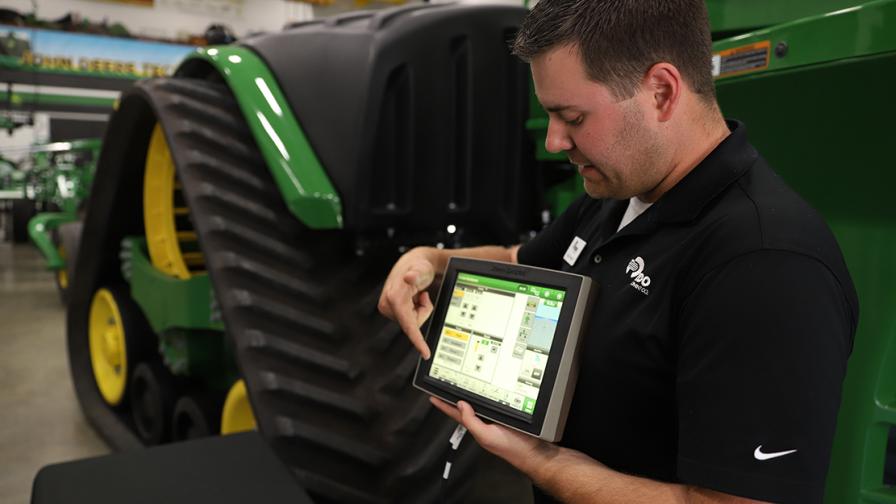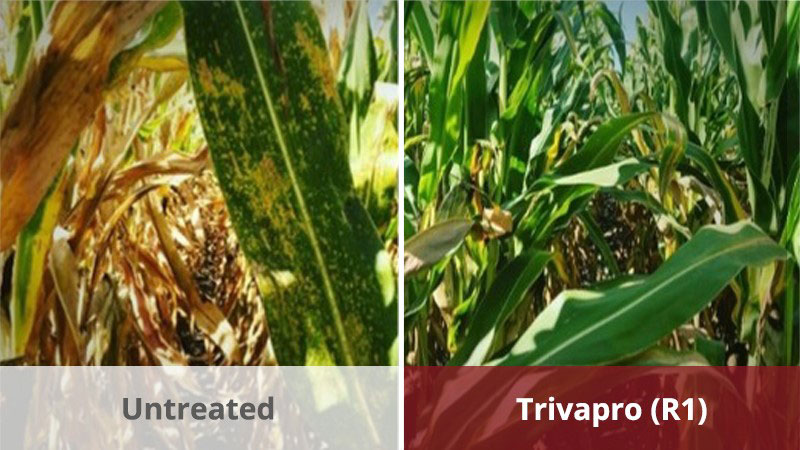5 Critical Steps for Evaluating Ag Tech Opportunities for Your Growers

In a world of continuously moving technology, let’s all reduce the fear and anxiety our growers have with adopting new opportunities.
With Silicon Valley and technology development firms investing more time and dollars in agriculture than ever before, there are more options to adopt agriculture technology at all points of the farming cycle. However, just because a technology is out there does not mean it is right for every grower’s operation.
After reading a book about the topic of choosing the right innovation at the right time, I began thinking about how farms have to face the growing agricultural innovations revolution. Technology developers are giving more attention to food production and management, and it can be overwhelming for growers. As trusted advisors, it is important we do our jobs to filter the good options from ill-fitting in our growers’ farming systems.
Using the book as inspiration, here are five steps I suggest using to evaluate technology opportunities for a grower’s farming operation.
Step #1: Zero in on Unique Value and Benefit
Watching late night infomercials (what, just me?) it is easy to see that, often, we’re inundated with advertisements for solutions to problems we didn’t know we had. Some of these solutions may be amazing, while others just aren’t integral to individual needs.
In that same realm, some challenges are universal across agriculture and some are not. One grower’s strategic problem may not be another’s. Before even considering a technology opportunity for a grower, ask the key question: What are this grower’s unique, biggest challenges?
Digging into the topic further, additional questions may help hone in the top challenges:
- Would the operation benefit by reducing inputs usage?
- Would the operation benefit with the increase of market timing?
- Maybe just reducing labor hours and wear on equipment would be the biggest win?
- What are the biggest challenges related to environmental protection concerns?
Closely related, consider the true cost/benefit associated with adding technology. Perhaps a new option may save 10% on fertilizer costs – but if the grower’s fertilizer process is already efficient, how much will they actually save, especially when considering the cost of the technology?
Just as important as it is to identify areas of opportunity, it is equally crucial to get familiar with the landscape of possibilities, opportunities, and risks, as the farm may not benefit from or see return on investment because the efficiency is already there. The benefits of technology, “as seen on TV,” while appropriate for one grower’s operation, may not make sense for the operation next door.
Once we identify the key issues and weigh risks, the right solution(s) can be proactively sought out.
Step #2: Research Promising Options
For those who aren’t tech-savvy, it may feel like technology is chasing you down unnecessarily, rather than the user seeking it out. However, continuing with the list of key priorities, we can help set the comfort level with seeking out productive solutions and weeding out those that are not relevant.
That said, even with the priorities clearly defined, taking technology for a test drive still requires quite a bit of research. Technologies can work well in some business climates but not others and knowing how the technology collects and reports information can go a long way.
Allow me to share an example: I know of a great app that helps with balancing input cost with current markets. The issue is I work in the Pacific Northwest, while the app uses inputs and prices of the Midwest to determine cost and loss ratio. While this is a great app and works well, it may not work best for the crops and prices in my local area.
Which brings me to my next tip…
Step #3: Consider Alternatives
It may seem simple enough to jump in on the first innovation discovered to solve a particular challenge. There are many innovative apps on the market but not all fit every operation, case in point, my location-challenged app.
To find out what other solutions might work, ask a few questions:
- How is the technology gathering information and what is its resources for information that it provides?
- Will the technology require different equipment than a grower already has?
- What are the annual fees or one-time fees?
- Are there methods or equipment my grower already uses that may have more advanced activations or add-ons?
It is a good idea to evaluate the versatility of a solution. There are some tools that have multi-functionality while others only do one, very specific job. Should you use the Swiss Army knife or the single-function tool?
While in Step #1, I made the case for not getting distracted by too many options, at times it is good to evaluate several options, with some multi-use tools in the bunch. If a multi-functional solution is chosen, one suggestion is to create a long-term plan to incorporate the various opportunities into the farm’s operation, so as not to feel overwhelmed to do too much with it right away.
And onto the next step to help further narrow down the choices.
Step #4 – Include Others
Ready to choose a solution and get to work – not so fast! Discussing a technology opportunity with other experts and those with vested interest in the solution is a good idea.
First, consider the operator. A technology solution that is not intuitive to those using the machine or corresponding equipment will have a steep adoption curve from the start. I have personally seen farm operations choose great technology advancements only to have them hard for operations and partners to manage. Including operators in the decision-making process may help choosing an innovation that will see more immediate use and management integration.
Next, while a partner equipment dealership may have biases, it is not a bad idea to consult with its technology experts at your dealership all the same. The choice between solutions could come down to which integrate with pre-existing equipment, farm software, and tech solutions already integrated on a machine. In addition, it may be a great solution you found but if it is redundant with something already in the tractor, it may just add more clutter and cost without producing great results.
Another consideration is consulting with local offices that might be willing to cost-share on technologies that have environmental benefits (such as Conservation Districts and NRCS). These groups may also help advocate early for new technologies and have them be included in the future of programming considerations or at least may offer funding resources for adoption.
Lastly, we all know those early technology adopters – so use them as a resource. Users willing to share their stories may be the best help in finding the right solution for a grower. It may also be a way to avoid making the same mistakes they made.
Step #5: Set Expectations, Evaluate, Repeat
Congratulations! You made a solid recommendation and your grower chose to move forward. In a few weeks or months, the big question is going to come: Did it work? Be prepared to have a solid answer.
First, establish timeline expectations with the grower. Some tools may prove their worth (or not) early on, while others need at least a growing season or several to give the tool its fair shake.
Next, determine what warrants success. Do not feel pressured to measure success based on one outcome; there can be small levels or major wins. For example, depending on the grower, just getting him or her to embrace and implement the solution into the daily operation can be a big win.
Finally, review the relevant data and outcomes to see if it supports those measures of success – or, if it points to failure. It is often a knee-jerk reaction to give up if something is not working right away but perhaps this analysis will reveal changes that could be made to increase the chance of success next time.
That said, be willing to admit if something is not working for the operation and why. At that point, again, the analysis may reveal tweaks or adjustments needed to make the tool a winner.
A Final Thought – Educate and Inspire Others
If you went through all the steps and successfully implemented a new technology for a grower, high-fives – but don’t keep it to yourself. Having conversations with other trusted advisors is a great way to share knowledge and find more opportunities that are right for other growers’ operations.
Certainly the discovery of both successes and failures is important and sharing info is a two-way street. Do not expect to hear the latest-and-greatest from someone if you’re not willing to share your successes (or failures) as well. Remember those early adopters mentioned in Step #4? Someone may look to you as that resource and appreciate the insight.
In a world of continuously moving technology, let’s all reduce the fear and anxiety our growers have with adopting new opportunities. With any luck, these tips also help reduce the stress on your end and increase your confidence in successfully implementing and managing technology for growers.






